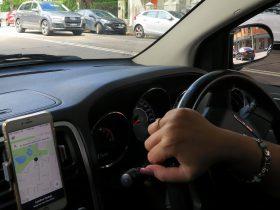By Nikolaus Lang
- Micromobility — such as e-bikes and e-scooters — is quiet, clean, and solves the first- and last-mile problem, but its widespread adoption has thus far been lackluster.
- 55% of those that do use it substitute walking or public transport, mitigating its positive benefits, according to a recent study.
- For truly liveable cities, micromobility must be a part of any city’s public transport network rather than a competitor.
Micromobility offers much more than just a fun way to get around.
E-scooters, e-bikes and other forms of micromobility have the potential to cut the congestion, emissions and noise pollution that plague our cities. It also represents a real tangible solution to the first- and last-mile transportation gap.
For micromobility to move into the mainstream, a deeper understanding of users, non-users and their needs is essential.
Have you read?
- E-scooters could be part of ‘the new normal’ for commuters in the UK. Here’s why
- Why we must leverage the economic benefits of cycling
- These are the world’s most liveable cities
Who uses micromobility, and why?
In a recent joint research project, BCG (Boston Consulting Group) and the University of St. Gallen surveyed 11,400 consumers in 23 metropolitan areas, from Europe, China, Japan and the US.
They found that:
- 42% of current users rely on micromobility for leisure activities, 39% for commuting, and 36% for running errands.
- More than 30% of all respondents use a bike several times a week, if not daily. Another 20% use one several times a month.
- As income level rises, so does micromobility use.
- Lower-income residents are typically less inclined to use micromobility. While cost and culture are factors, in some cities, the main reason is simply a lack of availability beyond city centers.
The biggest reasons people chose micromobility were of almost equal importance: flexibility, reliability, price, good weather, safety, and the chance to reduce travel time. In France and Germany, reliability is by far the main reason people choose it, while in Switzerland, it’s flexibility. In the US, weather and safety were the biggest reasons.
Apart from bad weather, which was cited by 44% of respondents, the most significant barriers to use were high cost, among 36% of people, an insecure bike lane network per 35% of the respondents, and distance to the next available vehicle, according to 34% of the people.

The bike is still king when it comes micromobility uptake. Image: BCG
The bike is still, by far, the preferred form of micromobility among city dwellers. In China, its use is eclipsed only by the e-moped. City dwellers there use all modes more often than their counterparts in any other country. France leads the European countries in e-scooter use. And in several countries, e-bikes are gaining use.
Micromobility’s substitution problem
Among the seismic societal changes of the pandemic was a re-orientation towards personal safety and health — and to that end, two years of COVID-19 sparked an uptick in micromobility use.
Though post-pandemic overall travel remains 10% lower than before, rising fuel costs and an increasingly environmentally-conscious public means micromobility remains an attractive option.
This, however, is not necessarily a good thing. What people substitute micromobility for means that well-meaning behaviour could, in fact, have unintended consequences.
32% of micromobility users choose micromobility mode often or very often over a private car, but an even greater percentage — 55% — use micromobility vehicles instead of walking or catching public transport. In other words, micromobility use today is at best neutral. It’s not yet replacing enough private cars and is instead substituting for the two greenest ways of getting around: walking and public transit.
Electrically powered micromobility vehicles produce emissions throughout their product lifecycle, from procurement and manufacture to disposal, and scaling them can create a different type of congestion with a different set of problems. Although mass transit vehicles create emissions in some lifecycle stages, the impact is offset to a great extent by their long asset life and their scale efficiency. The more users they attract, the greener they become.
Integrating micromobiltiy into city systems
Ultimately, an intermodal strategy — one that integrates micromobility vehicles with public transit services — is the most effective path to reducing congestion and emissions.
A single ticket that gives the rider access to trains, the subway and e-scooters also solves the first-mile, last-mile gap. Along with digital platforms that offer, for example, booking and real-time routing and inventory data, micromobility can become a viable choice for more than 1 in 5 commuters.
For most people, transportation choice comes down to price. To test people’s willingness to spend on integrated options, BCG and the University of St. Gallen created two scenarios, each with a different bundled public transit-micromobility offering that would be cheaper than buying the services separately.
For a single public transit ticket that includes 10 minutes’ use of a micromobility vehicle, respondents figured that most people would be willing to pay 25% more than the current cost of a public transit ride. For a monthly public transit pass that includes the use of different micromobility vehicles, respondents felt most users would be willing to pay 22% more.
Almost one-third of our respondents already combine bike use with public transportation several times a week. China stands out in this regard: 73% of China-based respondents use micromobility with public transportation. The next highest percentage is France, with 42%.
Discover
How is the World Economic Forum improving the future of cities?
The World Economic Forum’s Platform for Shaping the Future of Urban Transformation advances public-private collaboration in cities, enabling more resilient and future-ready communities and local economies.
- In collaboration with Accenture, the Forum is implementing a toolbox of solutions and city sprints to boost sustainability and reduce emissions in urban settings, through the Net Zero Carbon Cities programme.
- The G20 Global Smart Cities Alliance on Technology Governance is implementing global norms and policy standards to ensure that data is used safely and ethically.
- The Forum is empowering people to live longer and fuller lives in urban centres, through the Healthy Cities and Communities initiative. Partnerships in Jersey City and Austin, USA, and Mumbai, India, are impacting the lives of citizens via improved nutritional choices, physical activity, and sanitation.
- The Council on the Connected World agreed on IoT security requirements for consumer-facing devices to protect them from cybers threats, calling on the world’s biggest manufacturers and vendors to take action for better IoT security.
Contact us for more information on how to get involved.
The willingness to pay up for the convenience of integrated offerings suggests the public appetite for micromobility is there — but the conditions must be right. Expanding infrastructure like cycle lanes and storage facilities for vehicles, and extending coverage to underserved areas would also incentivize broader use. The more attractive the offerings, the more users. The better the economics, the more cities and operators can continue making improvements.
While nothing can be done about bad weather, there are many ways to jump-start smart micromobility use. First and foremost is integrating it into the public transit system. That’s the best way to ensure micromobility succeeds — and if it does, not only the users, but all residents will enjoy cleaner, quieter and more liveable cities.
Link: https://www.weforum.org/agenda/2022/07/micromobility-will-make-our-cities-clean-and-quiet-how-can-it-be-widely-used?utm_source=pocket_saves
Source: https://www.weforum.org
















Leave a Reply